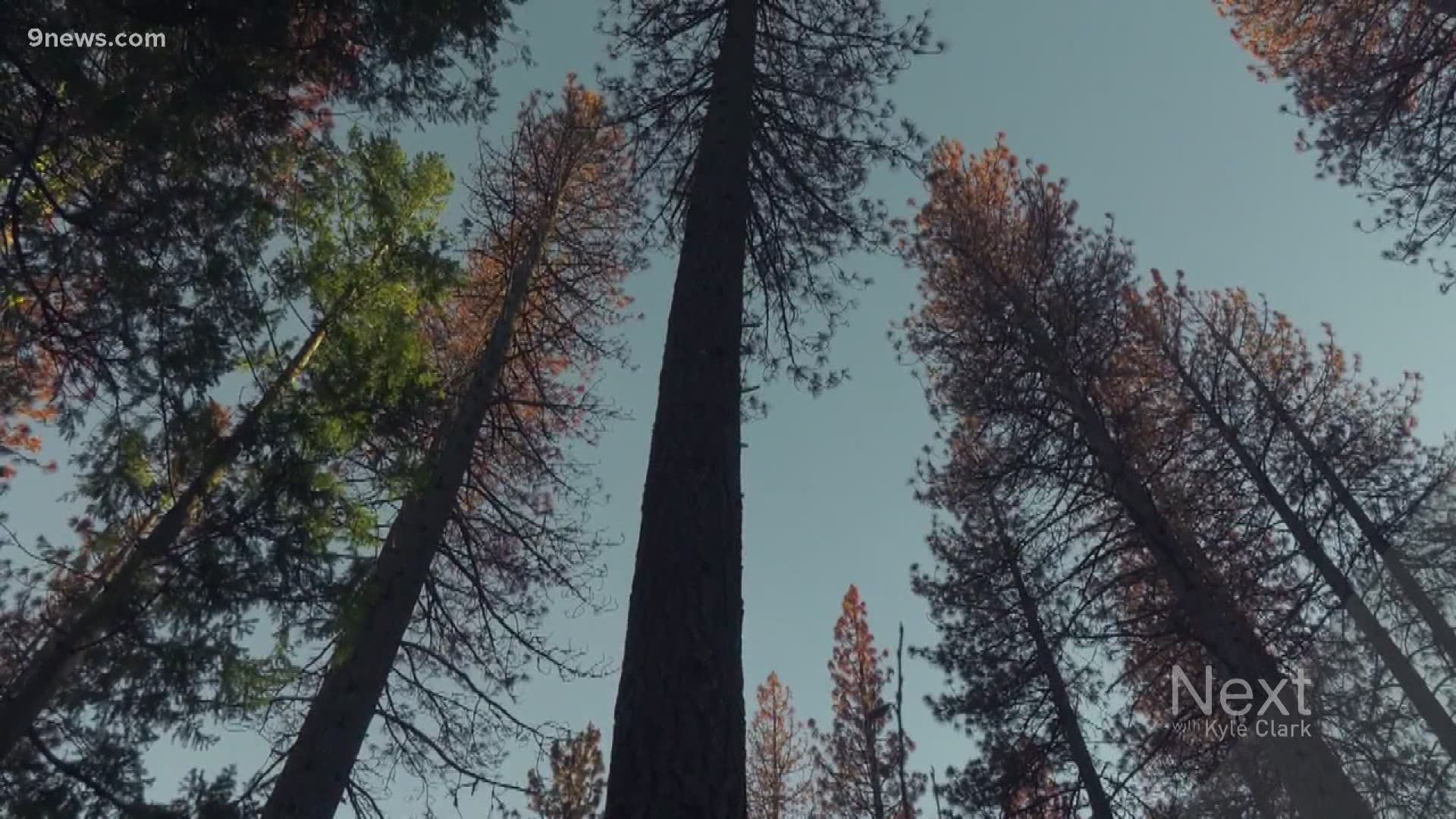COLORADO, USA — People in Colorado this summer have been frequently quoted as saying how sad and terrible the wildfires have been. After all, they've destroyed homes and personal property, caused numerous people to evacuate their homes, and they've caused very poor air quality in almost every county in the state.
But rarely do you hear someone talk about how good the wildfires are.
"Our forests are out of sync with what they should be, and so fire is important in the landscape," said Kamie Long, a supervisory forester with the Colorado State Forest Service. "
She said wildfire is natures way of cleaning the forest and keeping it healthily. It helps keep good spacing between trees, promotes a diversity among species, creates groups of trees with various ages and heights, and it eliminates old trees before they can become unhealthy with disease.
But she says since the deadly wildfires of the early 1900's, humans have made complete and quick suppression of forest fires a high priority. She even said there was a rule that developed among firefighters called the 10 o'clock rule mandating that all fires be put out by 10 am the next morning after a start.
“We’re paying for past sins, past management inactivity because we didn’t understand the importance of wildfire on the landscape,” said Long.
THE LODGEPOLE PINE
For one species of tree, fire is not only good, but it is also necessary. The Lodgepole pine is a Colorado native, and it has a unique trait that makes it dependent on fire in order to reproduce.
"The cones on the Lodgepole pine, we call them serotinous cones because the scales are closed with sap,” said Long.
She said the sap will only open and release the seeds when extreme temperatures between 113 and 140 degrees Fahrenheit are applied.
The sunshine can do that, but the Lodgepole mostly relies on wildfire to spread its next generation.
Their genetic makeup even promotes the quick and easy spread of wildfire. Long calls them a perfect ladder fuel. Meaning their very thin bark allows fire to quickly climb its skinny truck, and get to the crown of the trees where fire is almost unstoppable.
Long said a stand of Lodgepole pine needs to get recycled by wildfire about once every 200-300 years, but humans have spent the last 100 years suppression wildfire.
According to Colorado State Forest Service data, there are 1.5 million acres of Lodgepole pine in Colorado, which makes up about 7 percent of our forest.
"They are shade intolerant, so they need heat on their feet," explained Long. "So they like hot sunshine to hit them, and reach through the canopies and warm the ground around them."
Some of the Lodgepole burned by the Williams Fork and the Cameron Peak fires were reported to be in the grey phase, which is the final stage in the trees mortality. A result, said Long, of an unhealthy situation where bark beetles may have attacked sick and aging trees.
But now the fires have restarted a life cycle that Long says will give humans an opportunity to help manage going forward.
Long says the Lodgepole is, by natures design, often the first spark of life to reemerge after wildfire, and our state may need this tree in our future.
"After the fires, humans can go in and oversee the next generation of trees," said Long. "Making sure there is good separation, good nutrition, and we can remove the trees that are showing signs of bad genetics."
She said that Lodgepoles have always been and always will be an important part of Colorado forests. They may become one of the more resilient tree species if our states climate continues to become warmer and drier.
“They’re used to dealing with drier conditions, to insects, and wildfire. They’ve adapted to grow here with all the things that we have,” Long said.
SUGGESTED VIDEOS: Colorado wildfires

